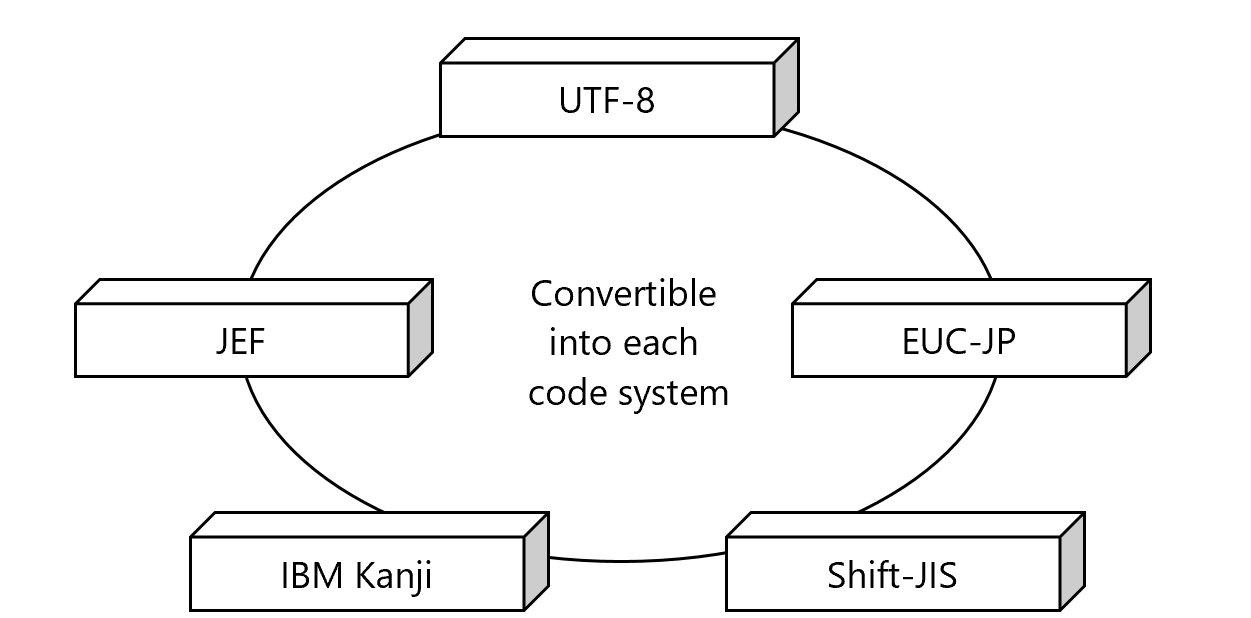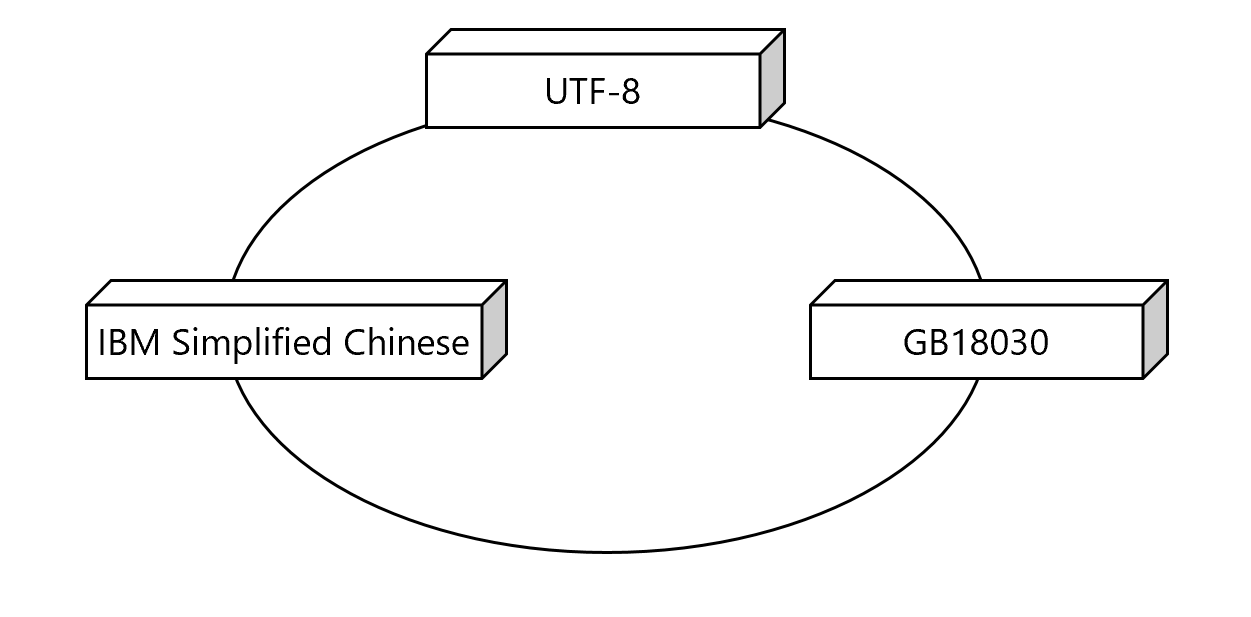Double byte code conversions by HULFT
The following figures provide an illustration of double byte code conversion by HULFT, illustrating first the case of Code-set Conversion for Japanese, and then the case of Code-set Conversion for Chinese.

Figure 1.10 Double Byte Code Conversion (for Code-set Conversion for Japanese)

Figure 1.11 Double Byte Code Conversion (for Code-set Conversion for Chinese)
When you specify the code set that is used for file transfer on the remote host for Code Set for Transfer (KCODETYPE) in the Host Information, HULFT can convert double byte codes.
Table 1.11 shows code sets that you can specify for Code Set for Transfer (KCODETYPE) in the Host Information.
In Code-set Conversion for Japanese, if both of the following conditions are met, HULFT does not convert double byte codes:
-
The options specified for Code Set for Transfer (cs4trnsfr) in the System Environment Settings are the same for the host on the sending side as for the host on the receiving side
-
The options specified for Standard for Japanese (jistype) (JIS Year) in the System Environment Settings are the same for the host on the sending side as for the host on the receiving side
If the code set that you specify for Code Set for Transfer complies with 90JIS (JIS X 0208-1990), specify '83JIS' for Standard for Japanese (JIS Year).
For details on the Standard for Japanese (JIS Year), refer to Standard for Japanese (JIS Year).
During Code-set Conversion for Chinese, when the same Code Set for Transfer is used on the host on the sending side and the host on the receiving side, HULFT does not convert double byte codes.
For details on the Code Set for Transfer, refer to Code Set for Transfer.